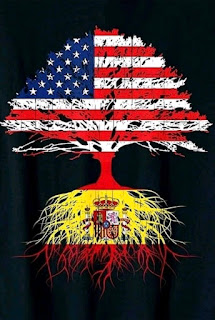La restauración del muro que rodea el jardín del Casón de Hacienda Riquelme es una buena noticia. Preservar el valor estético y el estado de un elemento protegido por su valor histórico beneficia al resort, aunque esa reparación no sea barata.
En el muro hay dos puertas de forja. La situada en el lado sur tiene un notable valor artístico. La situada en el lado oeste es mucho más sencilla y pequeña, pero no por ello carece de interés. Hace algunos años, una de las hojas de esta segunda puerta se desprendió al fallar su sujeción al muro. La hoja estuvo apoyada mucho tiempo en dicho muro hasta que finalmente desapareció. Por fortuna, un miembro del Comité nos ha informado amablemente que las puertas forman parte del muro y su restauración está incluida en el proyecto. Por ese motivo está prevista la fabricación de una nueva hoja que reemplace a la original perdida.
Las fotos siguientes y la información de los pies de foto se han extraído de la página Historia de Hacienda Riquelme. Haga clic sobré cualquier foto para ampliarla.
The restoration of the wall surrounding the garden of the Casón of Hacienda Riquelme is good news. Preserving the aesthetic value and condition of a protected element for its historical value benefits the resort, even if the repair is not cheap.
There are two wrought-iron gates in the wall. The one on the south side has a remarkable artistic value. The one on the west side is much simpler and smaller, but not without interest. Some years ago, one of the leaves of this second door came loose when its fastening to the wall failed. The leaf rested on the wall for a long time until it finally disappeared. Fortunately, a member of the Board has kindly informed us that the gates are part of the wall and their restoration is included in the project. For that reason, the manufacture of a new leaf to replace the lost original is planned.
The following photos and caption information are taken from the History of Hacienda Riquelme page. Click on any photo to enlarge it.
Wrought-iron gate at the southern entrance to the garden of the Casón. During the XIX, century houses and states used to carry initials standing for the name of the sponsor and the date of building. You can see in this gate the initials ARA (Antonio Riquelme y Arce) and (1)857. The photo of the closed gate was taken on 10 October 2010.
Iron gate in the Western access to the garden. The initials RBR stand for Rafael de Bustos y Ruiz de Arana (1885-1943), great-grandson of María Teresa Riquelme y Arce, husband of Casilda Figueroa y Alonso-Martínez and father of Casilda de Bustos y Figueroa. The photo of the closed gate was taken on 10 October 2010.
The west side of the Casón garden wall as seen from the golf course. Photo: 18 May, 2014


















.bmp)































.png)



